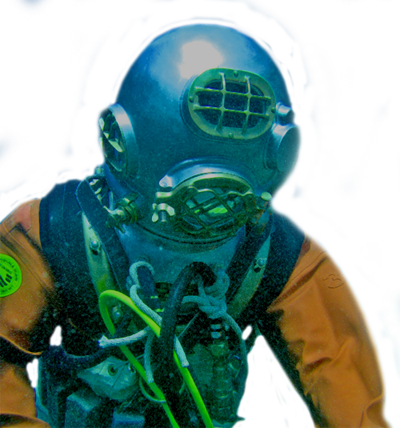deep-sea submersibles
The tool that made true exploration of the deepest waters of the seas possible is the deep-sea submersible vessel or vehicle. Submersibles are designed to dive to much greater depths than submarines. Because of the tremendous pressures in the deep ocean realms, they are built for strength, survival, and specific research tasks. Oxygen is furnished from limited on board storage tanks or piped in from the support vessel at the surface. Manned submersibles have descended to over 20,000 ft (6,000 m) deep; one of these, the Argo, was used by Dr. Robert D. Ballard to locate the wreck of the H.M.S. Titanic in 1985. After the Titanic's location was discovered using a manned submersible, a smaller, unmanned robot submersible named Jason ventured into the wreck to photograph its interior.
helmet diving suits
Modern helmet diving suits usually consist of a waterproof one-piece suit made of canvas and rubber that entirely covers the wearer except for the head and hands. A metal helmet with side and front windows covers the head. A noncollapsible pipe connects the helmet to an air supply. An attached lifeline hauls the diver to the surface. Too rapid an ascent from great depths causes the diver to suffer decompression sickness. To prevent this, deep-sea divers either use an all-steel, armored diving suit or breathe a special mixture of nine gases.

